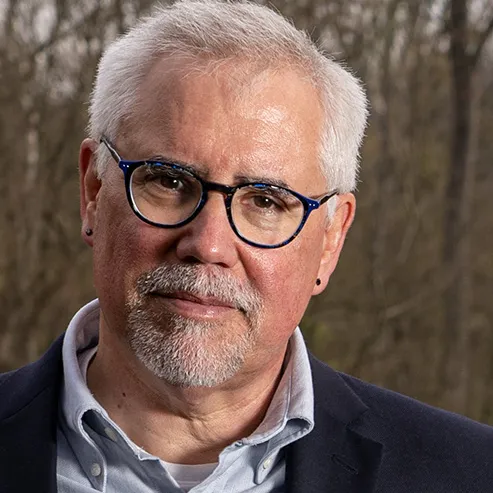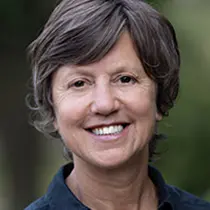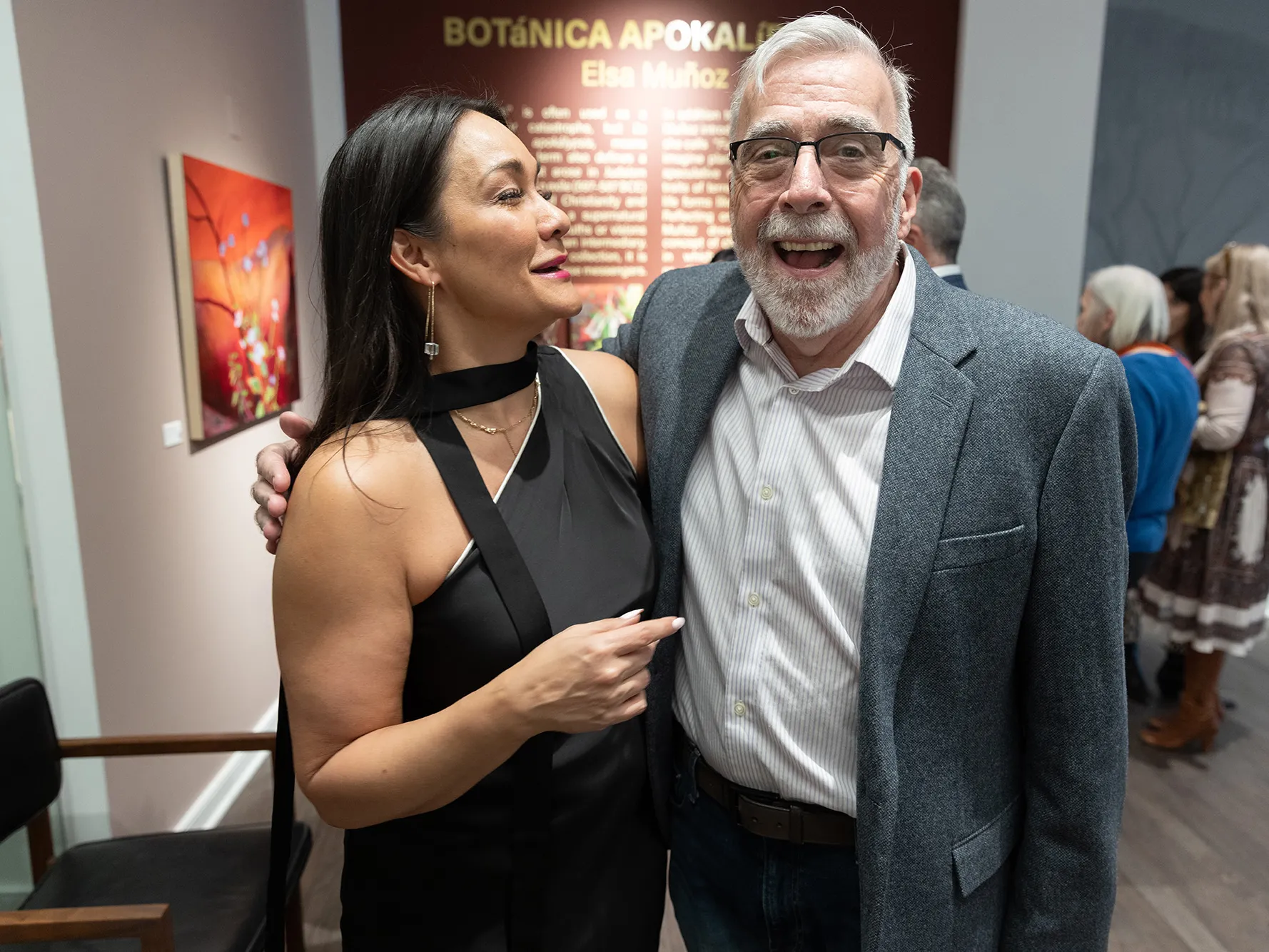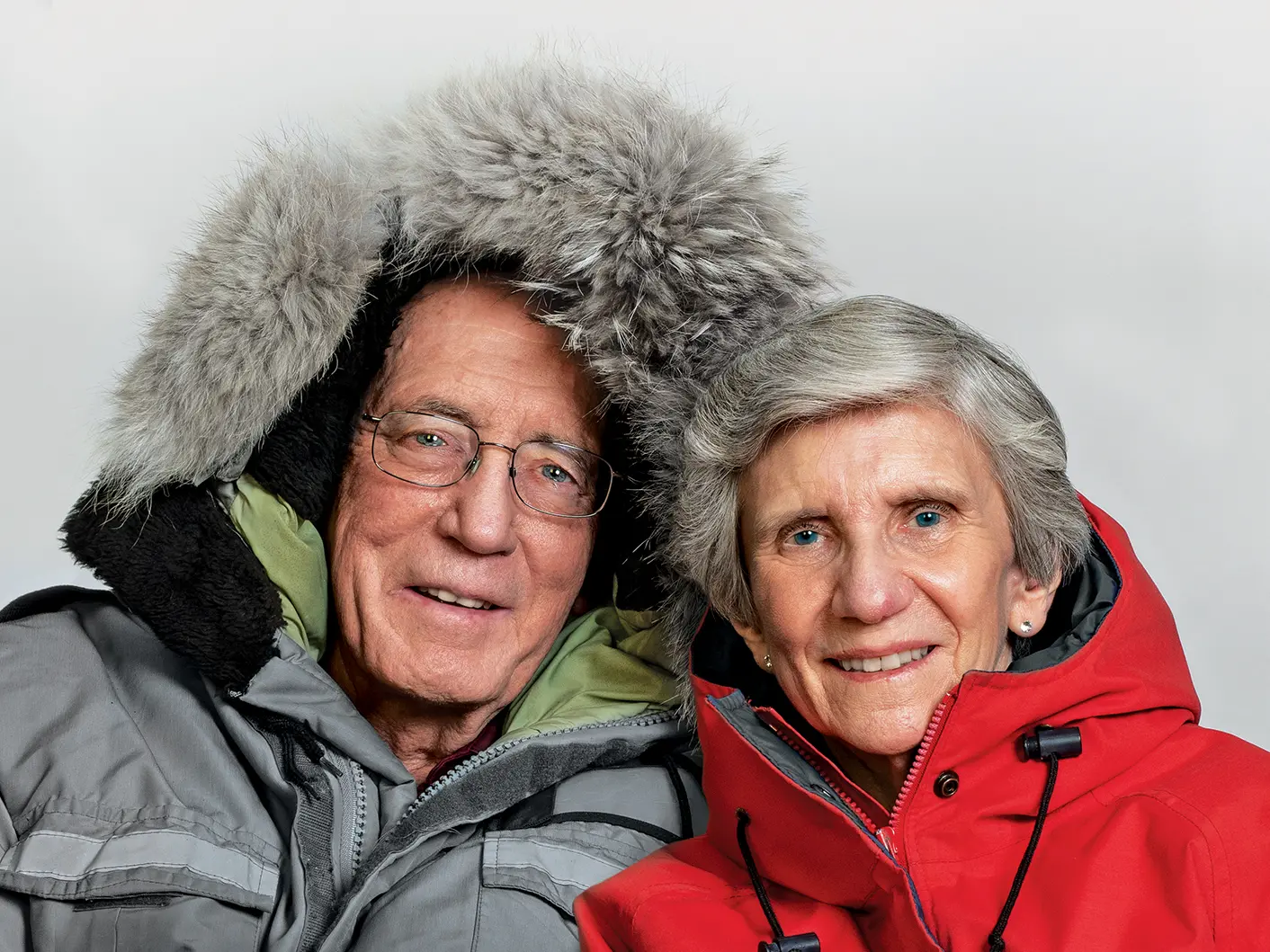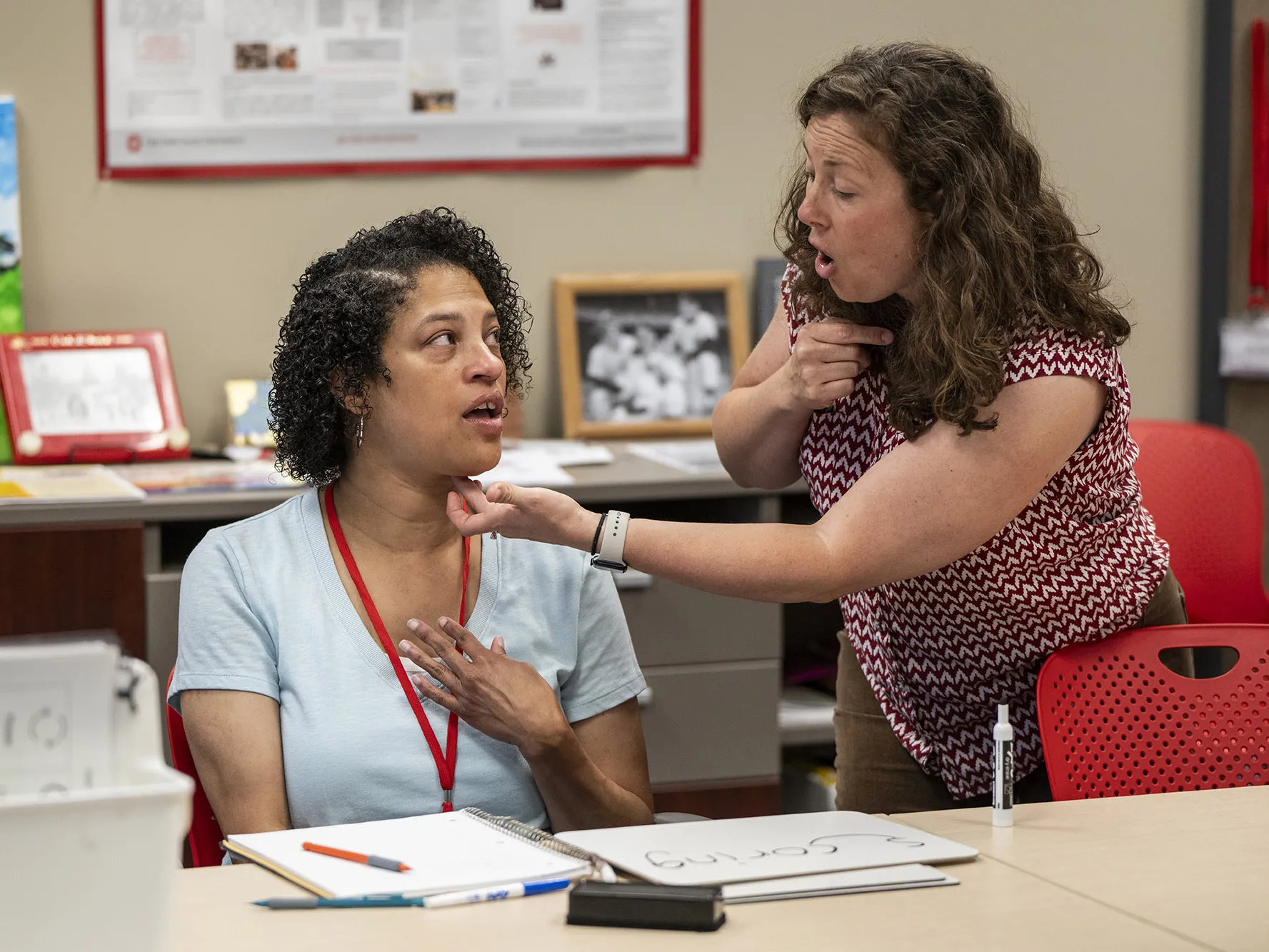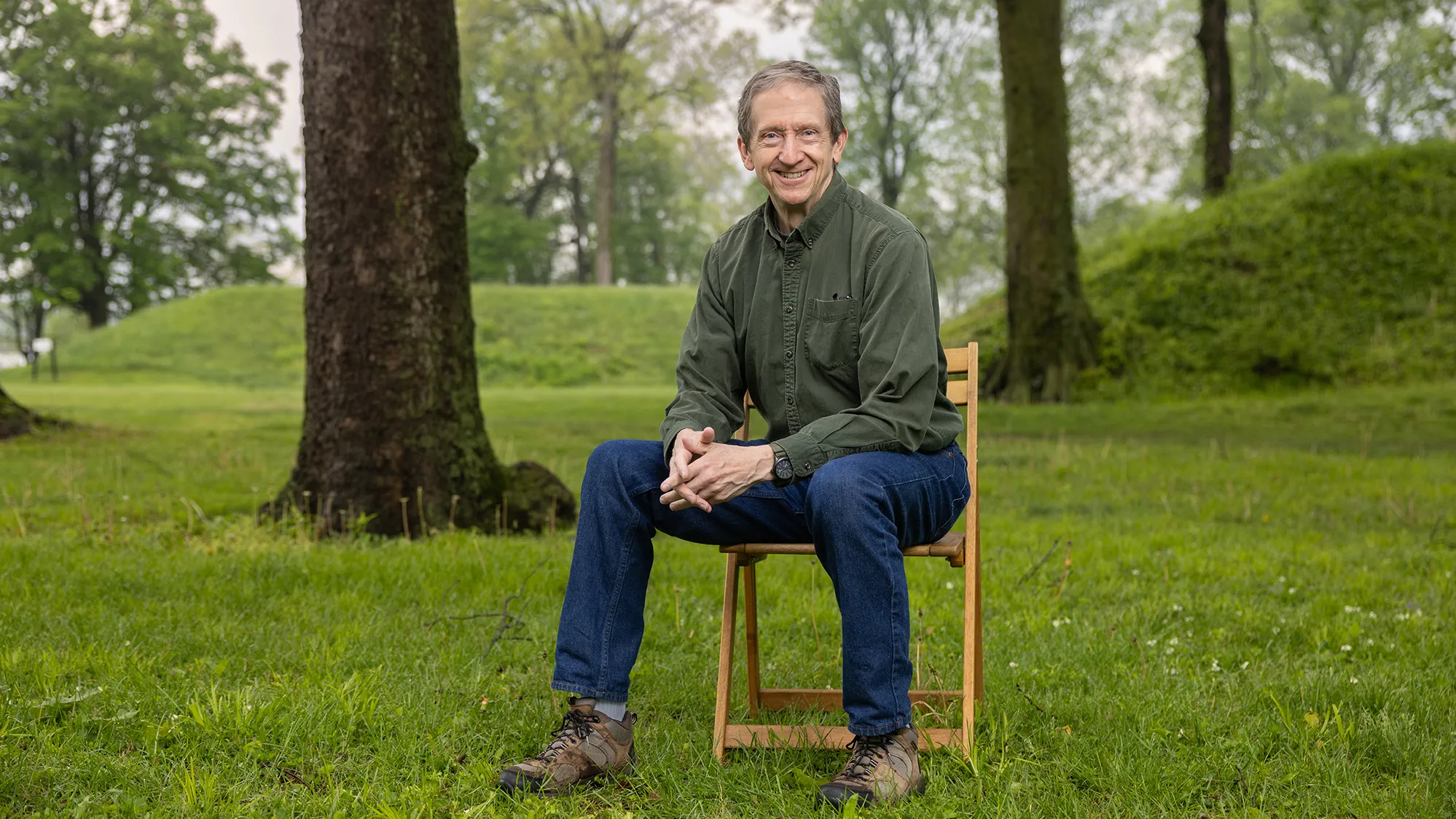

History, reclaimed
Archaeologist Bradley Lepper ’79 MA, ’86 PhD has devoted his life to understanding and celebrating the unsung wonders of the Hopewell culture. The rest of the world is finally catching up.
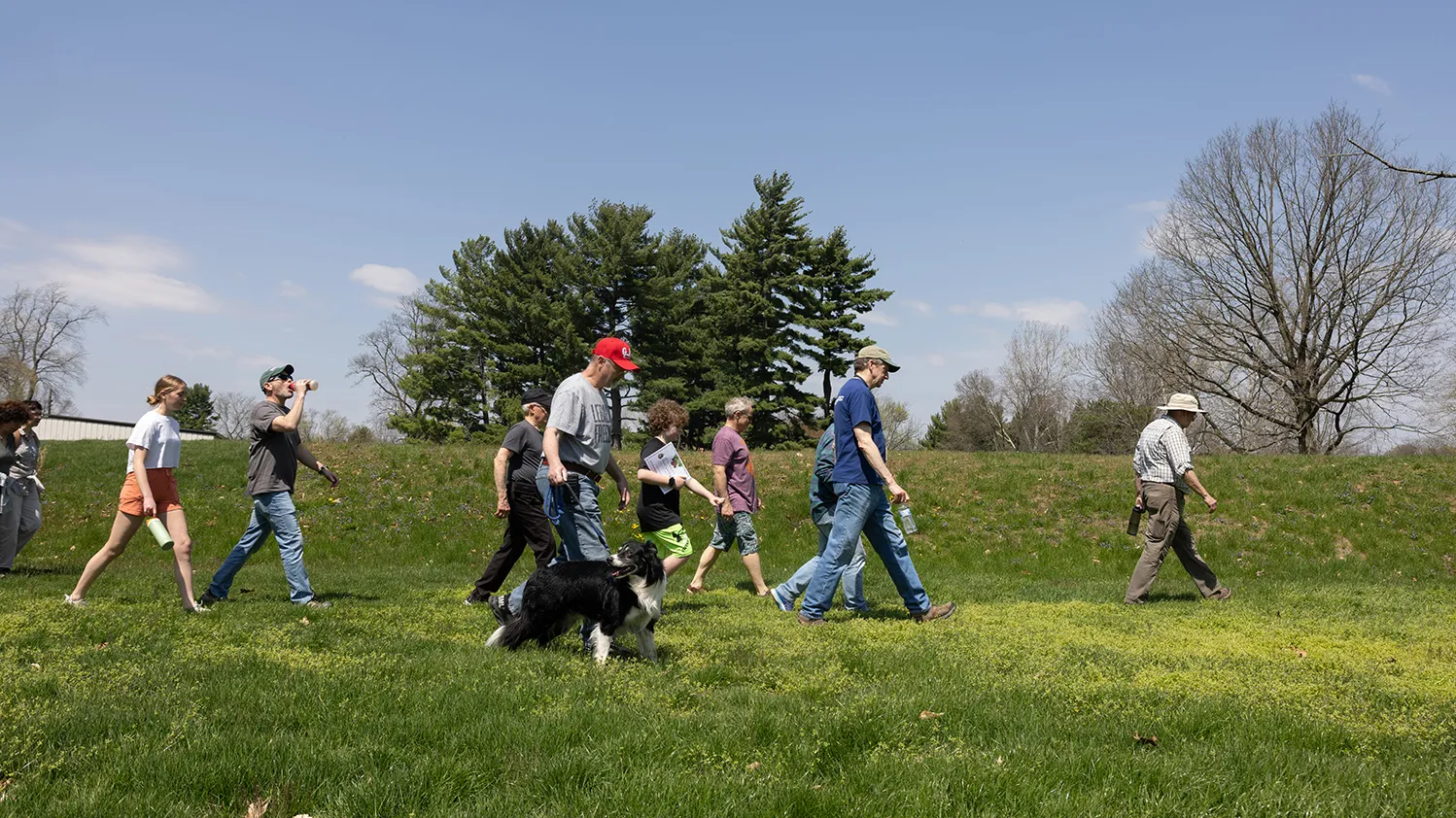
Lepper (second from right) leads a tour of the Octagon Earthworks in Newark during World Heritage Week in April.
How a boy becomes an archaeologist
Lepper, 69, can’t remember a time before he wanted to become an archaeologist. Likewise, he recalls no single defining moment that led his young mind toward the ancient world. He was born in the 1950s, in the waning years of what is sometimes called the “golden age of archaeology.” During the first half of the 20th century, the news was filled with breathless accounts of discoveries that illuminated the exotic histories of ancient civilizations: British Egyptologist Howard Carter’s discovery of Tutankhamun’s tomb in 1922; American botanist Cyrus Lundell stumbling upon the lost Mayan city of Calakmul in Mexico in 1931; amateur archaeologist Basil Brown digging up the medieval Anglo-Saxon burial ship at a site known as Sutton Hoo in 1939. They were still uncovering Dead Sea Scrolls in the decade when Lepper was born, and in 1961, as he would have been starting elementary school, a villager digging a well on the Greek island of Mykonos uncovered the famous Mykonos vase (circa 670 B.C.), featuring the earliest known depiction of the Trojan Horse.
Heady days, indeed, and romantic images of archaeology permeated schoolbooks and news reports when Lepper was in school in Tallmadge, Ohio. By the time he graduated, his resolve had strengthened. He told everyone he was going to be an archaeologist. Lepper’s father was a Cleveland autoworker and his mother a school secretary who eventually worked in administrative positions at the University of Akron, and Lepper was among the first generation in his family to attend college. Resources were limited, and his mother’s job at the university provided free tuition, so she offered her would-be archaeologist son a deal: complete two years at Akron and then finish his degree at any American university of his choosing.
Lepper took the deal and chose the University of New Mexico, which had one of the best archaeology programs in the country, in a region that was ground zero for the discipline in the United States. Home of Chaco Canyon, Mesa Verde and Bandelier National Monument, the west was where archaeology was happening, and New Mexico was where, in 1929, the first fluted stone spear point, known as the Clovis point, was discovered.
Fluted spear points would define the next chapter of Lepper’s education. They are associated with Paleoindians, the earliest known humans in North America—Ice Age hunter-gatherers who lived a nomadic existence roughly 8,000 to 12,000 years ago. For graduate school, Lepper chose Ohio State and, fascinated by these Pleistocene people, focused his research on the distribution of Clovis points across Coshocton County, where high-quality flint attracted Paleoindians from a wide region. Through his research, Lepper became a familiar figure roaming the collections at the Ohio Historical Society (now Ohio History Connection). After completing his doctorate and a short stint with a private contractor, he arrived in Newark in 1988 to manage two historical society sites, the Great Circle Earthworks (a short distance from the Octagon) and Flint Ridge.
By then, he was married to his wife, Karen, a union that has lasted more than four decades and produced two sons, Ben and Peter. Karen Lepper teaches science and coaches robotics at a private school in Granville, Ohio, and says her husband’s exuberant obsession with archaeology is tempered by his sense of humor, demonstrated by a pin he purchased while visiting an archaeological site on their honeymoon.
“It said ‘Love is fleeting, but stone tools are forever,’” she says, laughing. “He’s very enthusiastic about his work, and he loves to talk about it, but he’s never overbearing. He’s a good listener, too.”
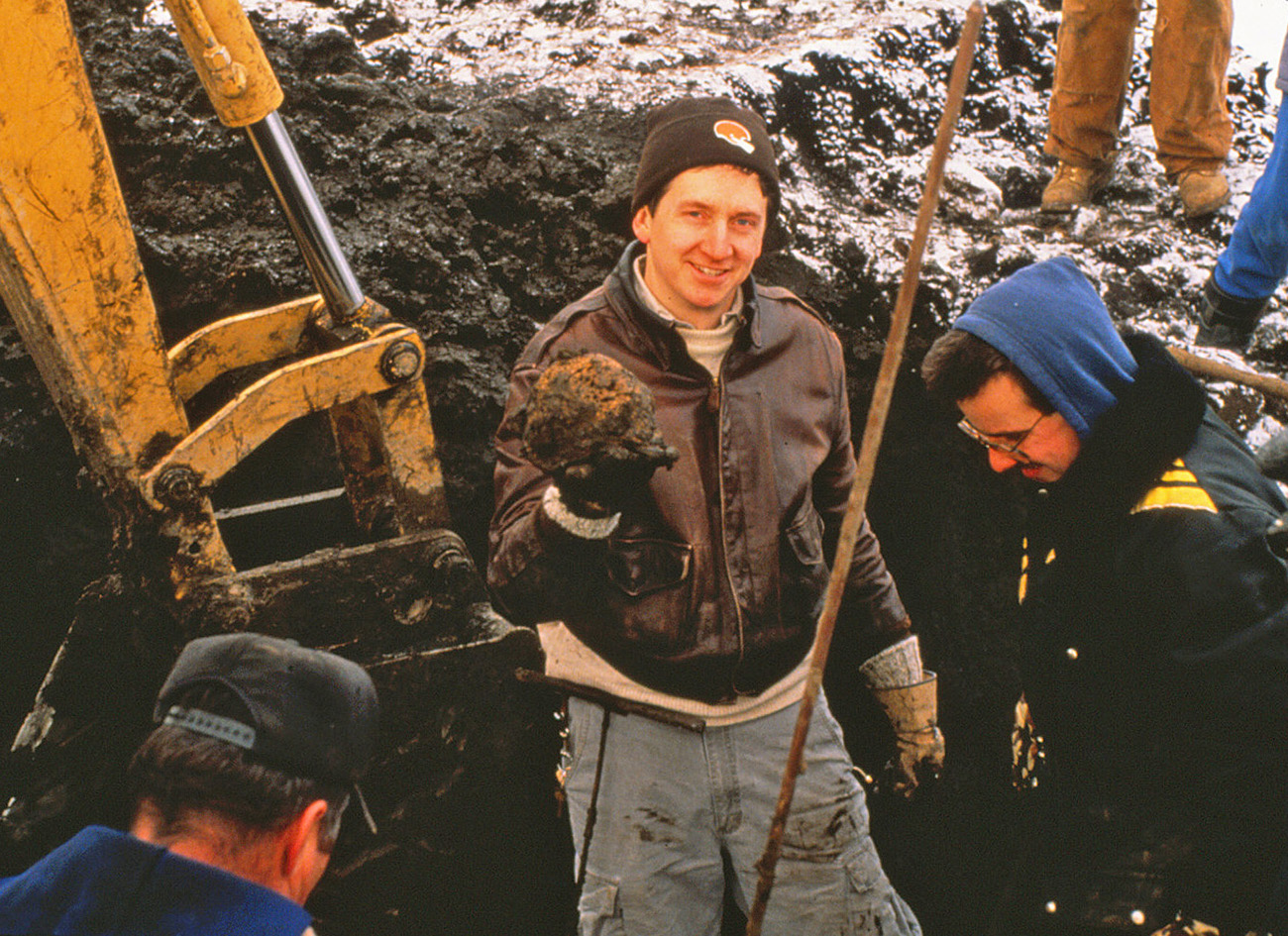
Two weeks before Christmas in 1989, a man excavating a peat bog at the Burning Tree Golf Course south of Newark was stunned to uncover the well-preserved skull of a mastodon, a Stone Age pachyderm often hunted by Paleoindian people. Fortunately, the golf course owner contacted the historical society, which sent Lepper to see what he could dig up.
Jeff Gill is an amateur archaeologist who has collaborated with Lepper almost since he arrived in Newark in 1988. Gill remembers that Lepper kept his cool despite the Burning Tree owner giving him and his hastily assembled team of volunteers just two days to excavate what turned out to be one of the most complete skeletons of a mastodon ever discovered. Lepper had the presence of mind, while standing hip deep in mud on a freezing December day, to notice a purplish brown mass near the rib cage. He collected the mass and saved it. “It turned out to be the gut contents,” Gill recalls.
Those contents changed what scientists knew about mastodon diets and yielded the discovery of 38 species of still-living gut bacteria—at least 13,000 years old—which for many years were the oldest living organisms known to science.
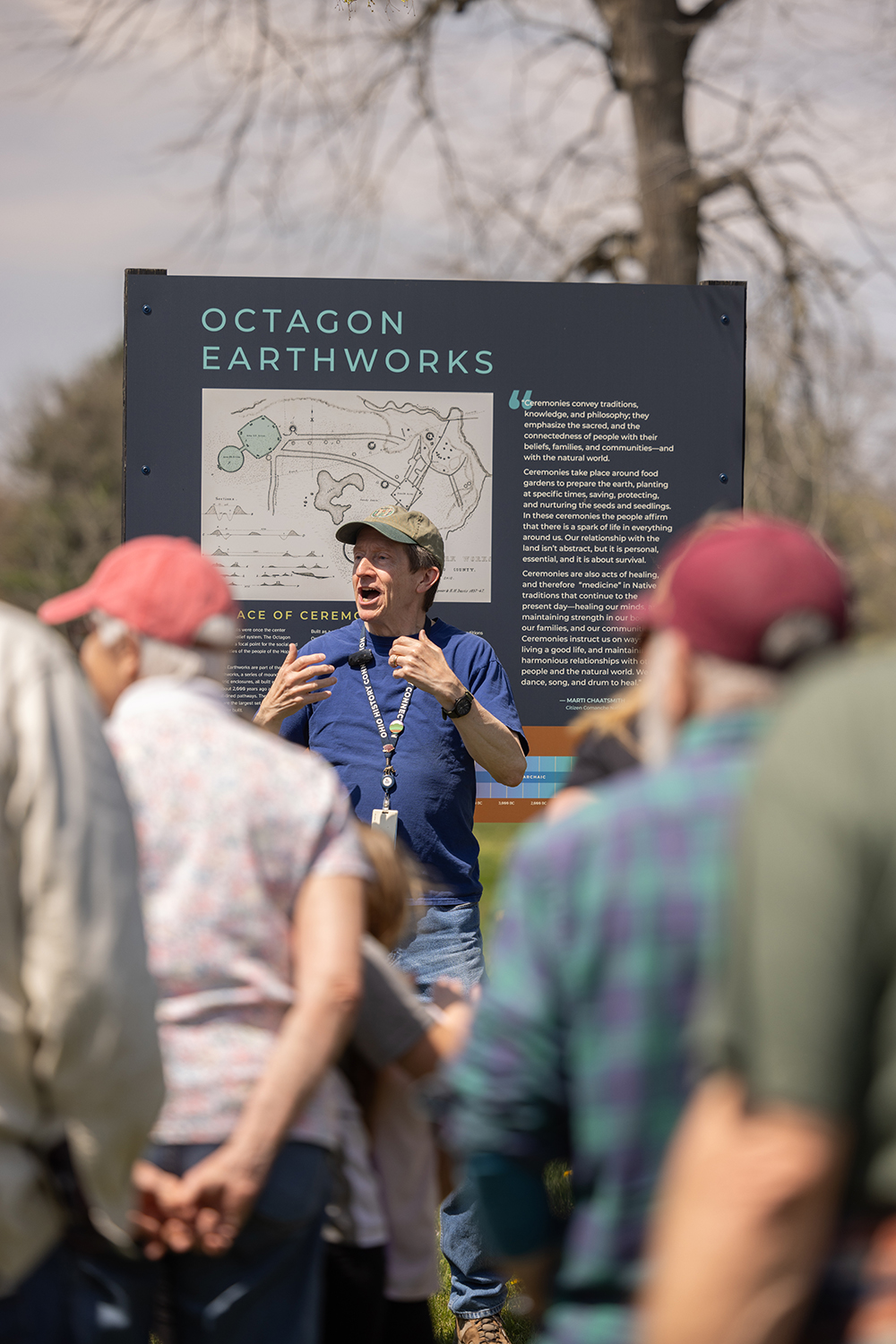
New ideas about an ancient people
Following the Burning Tree Mastodon discovery, the focus of Lepper’s work gradually moved out of the Pleistocene in favor of Woodland-period cultures like the Hopewell. He’s been a prolific contributor to popular literature about the Ohio pre-contact people, writing and editing books, pamphlets, blog posts and a column on archaeology that ran for 20 years in The Columbus Dispatch. He was the lead writer for Ohio Archaeology, a thick book for nonscientists that won the Society for American Archaeology’s 2007 Public Audience Book Award. He also taught at Ohio State’s Newark campus from 1992 to 2013.
While many scientists are uncomfortable discussing their work outside the bubble of their peers, Lepper enjoys sharing his passion for science with the public, Gill says. “Brad has always been a top-quality scholar, but he is never too busy to stop and say, ‘Oh, there’s 100 fourth-graders who need to hear about this site. I’m going to drop everything and do that first.’”
Lepper’s supervisor at Ohio History Connection agrees. “Brad’s passion for learning about and sharing the past is truly something that all Ohioans have benefited from,” says Jen Aultman, chief historic sites officer. “He is a master at telling the stories that make people passionate and want to learn more.”
Lepper is a “top-notch researcher,” says Rob Cook, anthropology professor at Ohio State and, like Lepper, affiliated with Ohio State’s Newark Earthworks Center. The pair collaborated on a recently published paper on the Great Serpent Mound, the Adams County effigy mound built by either the Fort Ancient or Adena people. “A lot of his ideas are groundbreaking,” Cook says, “especially in opening new views on the Hopewell.”
Those ideas, sometimes presented in scientific journals and other times captured in popular magazines or documentaries, include research that advances the theory of the Great Hopewell Road, a “parallel-walled avenue of remarkable straightness” that Lepper suggests may have connected the mound complex in Newark to similar mounds near Chillicothe 60 miles to the south.
Another is the notion of the Hopewell sites as pilgrimage destinations. Excavations of Hopewell mounds have uncovered artifacts made from materials found only in landscapes hundreds of miles from Hopewell ceremonial sites: obsidian from the Yellowstone Valley, conch shells from the Gulf Coast, mica from the Smoky Mountains. For years, archaeologists believed these materials were obtained through a vast trading network. Given the size and complexity of the ceremonial structures, Lepper proposes another theory: that people from hundreds of miles away may have come to the Ohio Valley as pilgrims, bringing treasured items with them to support ceremonial rituals.
Cook says Lepper’s genius is to make complicated research relatable. “He’s one of the best at doing that,” the professor says.

The moral of the story: Respect
Much has changed in the archaeology world since Lepper entered the field, when methods still relied heavily on systematic digging and carefully removing and analyzing rock and soil layers to reveal artifacts, including human remains. In 1990, two years after Lepper arrived at Newark, Congress passed the Native American Graves Protection and Repatriation Act (NAGPRA), landmark legislation that requires a far more sensitive and respectful approach to human remains, funerary objects and other sacred items. From a practical standpoint, it means that at the Octagon site, researchers will move slowly, and only after consulting with a committee of Native American tribes who may be the direct descendants of the Hopewell.
Ben Barnes is chief of the Shawnee Tribe, one of three federally recognized Shawnee tribes whose ancestors were forcibly expelled from Ohio in the 1800s. He remembers his early meetings with Lepper, part of a consultation about the Indigenous remains held by the History Connection. “I was certain that I wasn’t going to like him,” says Barnes, who lives in Oklahoma. “Tribal nations and archaeologists usually have not gotten along very well due to generations of practices of digging up our ancestors.”
In discussing an exhibit of ceremonial Shawnee water drums at the meeting, however, Lepper realized that the stones used to secure the bindings of the drums were remarkably similar to intricately carved stones found in the Hopewell Seip Earthworks near Chillicothe and casually identified by 1920s researchers as a collection of children’s marbles. The discovery led to a collaboration by the two men, and their research was published in the Journal of the World Archaeological Congress. “That’s when I realized that we had an ally in Brad Lepper,” Barnes says. “I learned that he was truly a curious soul. He just wanted to understand the story … to tell things in their fullness.”
Glenna Wallace, chief of the Eastern Shawnee Tribe of Oklahoma, says she has always enjoyed working with Lepper. “He is sensitive, he’s polite, but he’s a fact-checker,” says Wallace, who collaborated with Lepper on the UNESCO application. “He never gives you the answer you want to hear if it’s not what he believes.” Usually equanimous and even courtly, Lepper can be direct when he wants to be, she says, as he was when she was with him once at the Great Serpent Mound. A visitor claimed that the mound was the work of space aliens, an idea that rankles Native Americans and scientists equally.
“And he told the person, ‘Anything is possible. Anything can be suggested. But that anything has to be tested. That anything has to be proven. And you’ve been saying this for years, and for years there has been no proof.’”
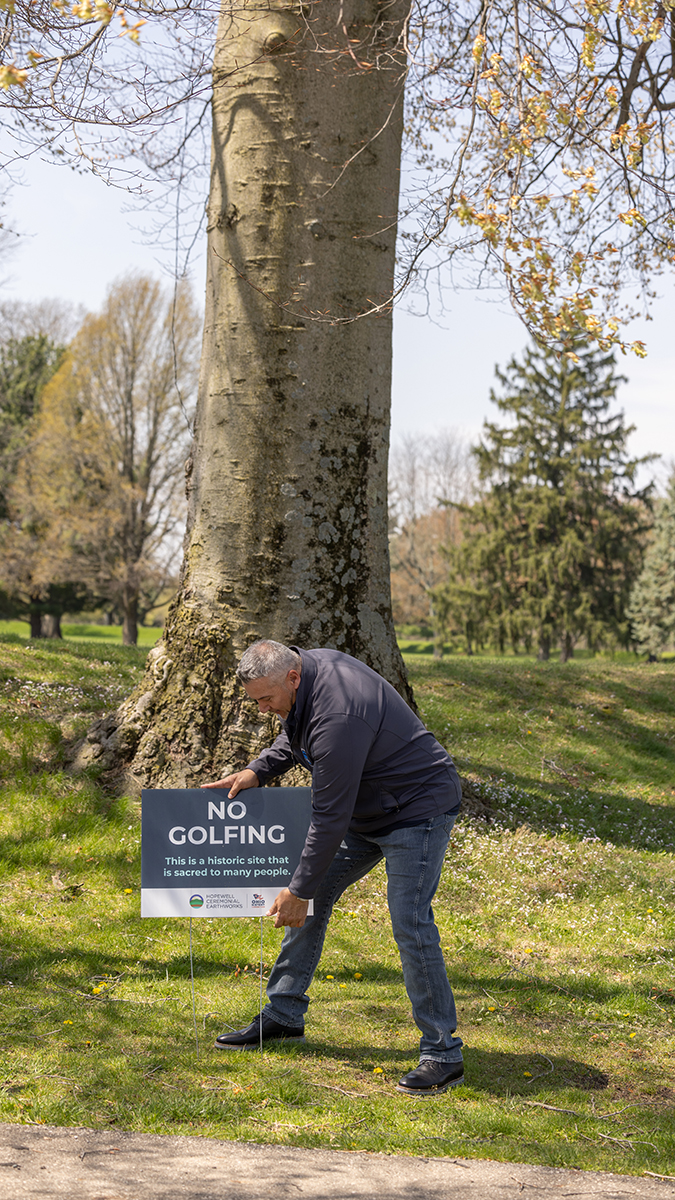
All are now welcome
Since the UNESCO designation, visitation to Ohio’s earthworks has surged. At Fort Ancient (which was miscategorized and thus misnamed a century ago and is actually a Hopewell site), visitor numbers are expected to reach 25,000 in fiscal year 2025, up from 12,000 visitors just three years earlier. And visitation nearly quadrupled at the Great Circle site in Newark between fiscal years 2023 and 2024.
This pleases Lepper, but not nearly so much as the arrival, on a recent school day, of elementary students storming into the former golf course clubhouse (now the Octagon site’s visitor center) ready for a tour. “It was filled with excited school children,” he says, “and seeing their excited faces and knowing they could go out and explore the whole site”—he pauses, smiling and searching for words—“I was in bliss for a while.”

